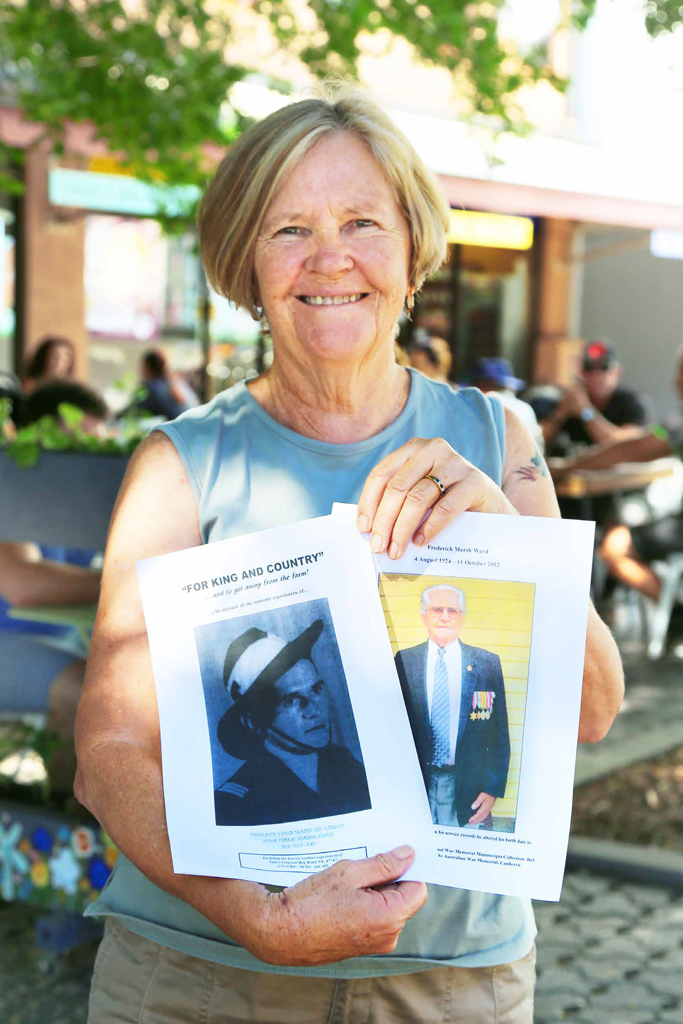Christine Nicoll holding a photo of her Father: Private Frederick Marsh Ward, WWII.
Fred Ward was born in Kempsey on the 4th August 1924. His older brother, Reg, enlisted in 1940 in Newcastle, fighting in Syria and later New Guinea, where he was killed on the 17th September 1943.
Fred’s first experience of war was with the Kinch el a VDC (volunteer Defence Corps) defending Hat Head from an invasion by Japanese paratroopers which proved to be a false alarm. He joined the army at Kempsey showground, putting back his date of birth by one year with his parents’ permission and later travelled to Sydney showground to complete his enlistment. He then trained in Wagga Wagga for the Field Ambulance -because he thought he could get to drive an ambulance – ultimately a big mistake – as he was trained in first aid as a stretcher bearer.
On Freds first deployment he travelled about 4 knots to Milne Bay in New Guinea in a Liberty Ship (ships hastily constructed by the Americans as troop carriers which were notorious for breaking up) and was sick for the entire trip. He spent one day in Milne Bay before travelling in night barges which crept along the shores to Buna. Coming to Red Beach the troops discovered dozens of Japanese bodies rotting in the heat and from there the troops had to cross the swollen Busu River holding hands to get across and some drowning in the process.
Fred was involved in the advance on Lae and later Finschhafen which were both were taken from the Japanese occupiers. Whilst in Lae, he received a letter from his parents asking him to visit his brother Reg who had been badly burnt in an incident at Jackson’s Field Airfield in Port Moresby. Ordinary soldiers were not allowed to travel so Major Dorney organised for him to travel as a stretcher patient by plane to Port Moresby where he discovered that his brother had died and already been buried in Bomana war Cemetery.
His return to Lae was via a supply barge which crept along the waterways at night and hid during the day. On his return he was involved in the defence of Pabu Hill, taken from the Japanese in order to sever their supply route from Sattleberg to Wareo which involved a nine day siege, one of the great stories of the 9th Division.
In Autumn 1944 the 9th division returned to Australia where Fred was stationed on the Atherton Tablelands at Ravenshoe. Whilst there, his father requested his release from the army because he was needed on the farm. Fred reluctantly agreed to leave the army and returned to Kinchela where he found it very difficult to settle back into his old farming routine. Nevertheless he remained a farmer in Kinchela, the manning and the Hunter for the next 67 years. Fred’s account of his wartime experiences, For King and Country … and to get away from the farm, is held at the National War Memorial Manuscripts collection.








